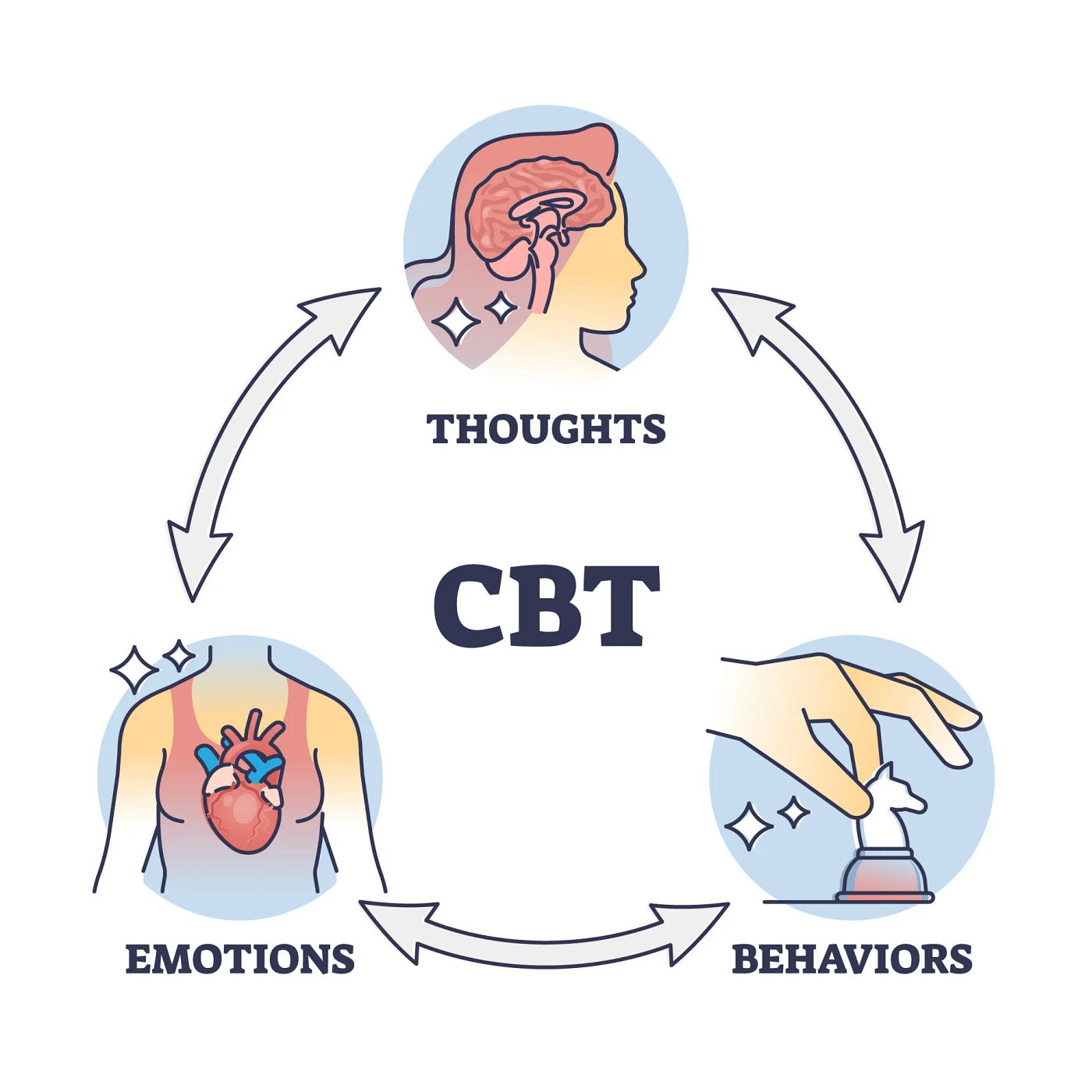Have you ever questioned your own thoughts? Has anyone ever refuted your beliefs? Did you ever reflect on why you think a particular way? These questions give us a peek into what Cognitive Behavioural Therapy (CBT) is. Cognitive Behavioural Therapy is an evidence-based therapy that has been proven to be an effective treatment for various mental disorders, including depression, anxiety, and addiction. This modality of treatment is arguably one of the most backed by scientific evidence and research.
CBT works on the basic principle put forth by Aron Beck and Albert Ellis, two prominent figures in the field of cognitive psychology, that most psychological disturbances occur as a result of a faulty belief system. We use a variety of cognitive shortcuts to comprehend the world around us. This helps us perceive any information faster. Sometimes, as a result of early learning and experiences, we adopt certain mental pathways of thinking that aren’t always rational. These are called thinking errors, and they prevent us from assessing our situations rationally. CBT identifies these thinking errors that people are prone to and challenges them. How we perceive a situation immediately isn’t always the only way of looking at it. Our anxious selves use defense mechanisms to cope with adversities that are often assisted by “Cognitive Distortions.” For instance, when we perform poorly on a test we label ourselves as “failures” on the basis of this one isolated incident, ignoring our prior achievements and talents. Cognitive distortions are systematic deviations from realistic and logical thinking, and they create inaccurate shortcut, automatic ways of processing information. These automatic thought patterns create disturbances in our belief systems of ourselves, the people around us, and the environment we live in. CBT therapists help clients identify their maladaptive belief systems and replace them with healthy and functional ways of thinking, which is referred to as cognitive restructuring.
CBT performs so well when compared to other modalities of therapy treatment because how we interpret a situation, rather than the situation itself, greatly influences our emotional, behavioral, and psychological response. By challenging the mental absolutes, CBT therapists open up new ways of reasoning for their clients. This not only helps them in the moment but equips them with tools and strategies they can use while facing adversities in the future. CBT teaches clients to see their circumstances through an objective lens by testing the validity of their beliefs, e.g., statements like “I am good for nothing” can be challenged by asking the client to state any four/five qualities they think are admirable about them. This simple exercise redirects the client’s perspective from having zero admirable qualities to four/five qualities, which in turn builds confidence and refutes their earlier beliefs about themselves.
CBT uses various techniques to restructure our cognition, which amplifies the applicability of it in a diverse demography. To state some effective CBT techniques that therapists use are:
a) Socratic questioning helps clients assess the validity of their thoughts by asking them questions like what proves their assumptions to be true;
b) Reattributing helps clients shift complete blame from themselves to distribute the responsibility of that event fairly;
c) Decatastrophizing transforms a fearful event to a bearable one by confronting the worst-case scenario of the event;
d) Cognitive rehearsal is a strategy where the client and the therapist collaborate to solve a past problem, preparing the client to handle a similar future situation more effectively.
Other behavioral techniques include:
a) Breaking down a task into smaller parts, which makes a huge task more manageable;
b) Practicing healthy behavior with the therapist first and then applying it in real-life situations;
c) Therapists perform role-playing exercises which teach clients adaptive behaviors to overcome difficult situations, known as modeling.
These strategies make CBT a powerful treatment modality in today’s world, hence, proving its popularity.
About the Author


